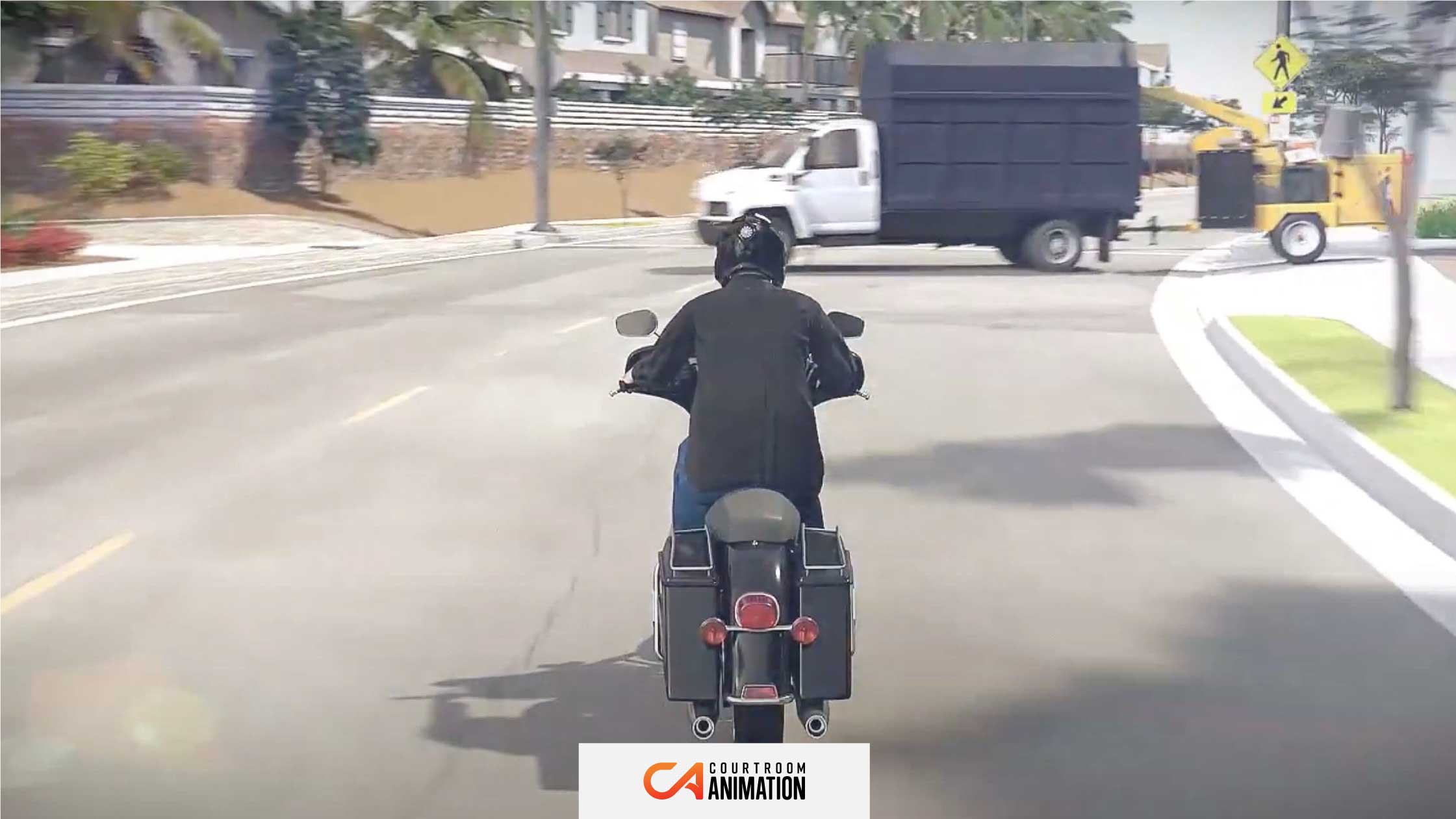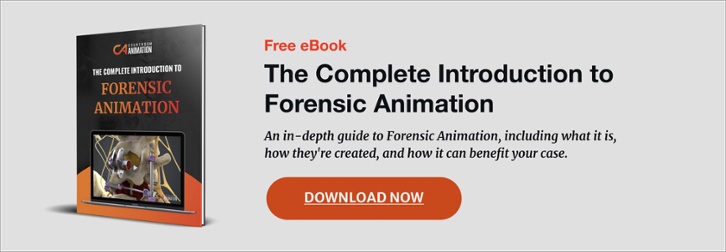
A high-quality legal animation is extremely beneficial in various stages of the legal process. A 3D animation is helpful even if your case does not go to court. But how can you as an attorney, no matter what stage of the legal process you’re in, ensure your demonstrative exhibits are admitted by a judge?
First, remember that legal animations are not computer simulations. Attorneys might use the terms animation and simulation interchangeably, but referring to an animation as a simulation can cause misunderstandings when working with these legal tools.
An animation is usually a video demonstrating an expert’s opinion or a witness’ testimony related to your case. They are used for demonstrative purposes; they do not offer any conclusions or become a new piece of evidence. In contrast, a computer simulation involves a complex set of calculations that shapes the foundation of the expert’s opinion. For an animation to be admissible, it must only represent accurate facts and avoid any prejudice.
The process for getting a 3D animation admitted is therefore much easier than a simulation, as it does not involve formulas, equations, and new data. Here are five straight-forward procedures that an attorney can employ to ensure a legal animation, or a legal graphic, can be used in court.
1. Share your legal animation with the opposing counsel early
Aim to submit your visual to the opposing counsel as early in the legal process as possible. Invite the other attorney(s) to comment on the animation and raise any objections they might have. If you send it to them early enough, it gives you an opportunity to address their remarks and revise the visuals as needed.
We recommend sending them the animation before or at the start of mediation hearings if possible, as many case’s finish during that stage of litigation.
With the opposing lawyer’s feedback in hand, an animation team can rectify the visual so that the foundation of the legal graphic meets their concerns. It eliminates the possibility of objections from the opposite lawyer during the trial or future discussions.
If you want to ensure your forensic or legal animations are admissible, download this free checklist.
2. Introduce it to your expert
For both the plaintiff and defense parties, their expert witnesses are a core part of their case for establishing authority and accuracy. That’s why it’s critical to discuss the visual during your expert’s deposition while the opposing counsel is present. This allows the opposing attorney to cross-examine your expert on the 3D animation’s foundation. This will go a long way to help mitigate any argument of prejudice or surprise.
For example, a medical animation might be complex to the untrained eye. The opposing attorney might try to undermine your expert witness by poking holes in the graphic, so it’s important to be prepared.
3. Reveal it to the opposing expert
The payoff of a legal animation for your settlement or verdict is worth the extra steps of sharing it to multiple parties. It’s just as important to present your legal animation to the opposing expert as it is to your own.
During the opposing expert’s deposition, make an effort to get them to admit the legal animation is reasonably accurate. If they don’t, ask them to articulate precisely why and how it may not be precise or detailed enough. If they do accept it as reasonably accurate, then you can be even more confident in its admissibility.
Once you have gathered their feedback, you should work with your animation team to edit the exhibit to address any concerns. An animation is always based on the data, reports and testimony provided.
4. Have witnesses testify to its accuracy
During deposition, have your case’s witnesses testify that the legal animation is reasonably accurate.
Helpful Tip: DO NOT SAVE THIS FOR THE TRIAL!
When this exercise is completed in the deposition stage of the legal process, you can attach the witness testimony to the motion in limine opposition. This allows the judge to see that the animation was created with a properly laid, knowledge-based foundation.
Legal animations, such as for accident reconstruction cases, can be quite complex and require a witness to explain that the incident was recreated accurately. A courtroom visual goes a long way for a jury or other legal parties to agree with either the defense or plaintiff attorney’s argument.
5. Put your legal animation on the exhibit list early
Submitting your animation to the exhibit list well in advance of trial puts the opposing counsel on notice that you intend to present it to the jury. This reveals that you are confident in your case’s argument, and are working with a professional animation team to boost the persuasiveness of your expert’s testimony or eyewitness accounts.
There are many opportunities for a defense or plaintiff attorney to bring a legal animation into play and support their core arguments. By sharing the animation with the opposing counsel and all experts involved, having witnesses testify to its accuracy, and ensuring it’s on the exhibit list well in advance of trial, you can almost guarantee the admissibility of your exhibits.
If you are in the pleadings, discovery, pre-trial, or the trial stage of a legal case and want a scientifically-accurate visual to gain the upper hand on the opposing counsel, then you should consult with an experienced animation team.
With 10+ years experience creating cutting edge legal animations on more than 2,000 cases, we are proud to boast a 99% admission rate.
Courtroom Animation has developed custom forensic animations and other legal graphics for cases involving:
- Personal Injury
- Medical Malpractice
- Accident Reconstruction Animations
- Environmental Law
- Traumatic Brain Injury
- Officer Involved Shootings
- Product Liability
- and Aviation Accident Reconstruction.
If you have more questions about legal animation admissibility, read our FAQ!

Topics: